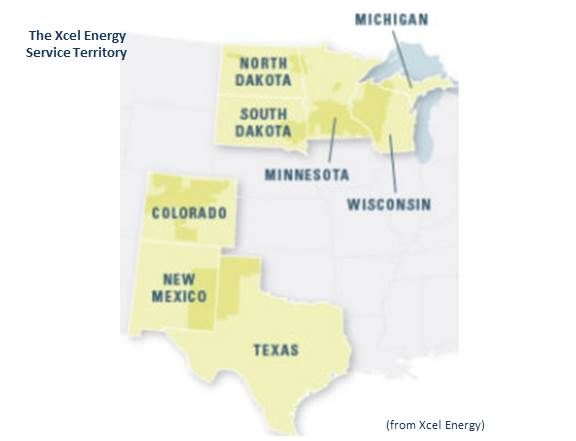According to SolarCity representatives, four “unnecessarily burdensome” practices at Xcel, Colorado’s dominant utility, are slowing the growth of solar in the state.
Xcel Energy spokesperson Gabriel Romero provided a written rebuttal to SolarCity's claims, but added, “We have decided to forego an interview and will simply leave you with this statement."
The statement reads:
"Xcel Energy’s Solar Rewards application system is designed to ensure that each application is reviewed for safe interconnection to the electric distribution system. We are always open to positive and constructive feedback from participants to improve the system and the application experience.
"The Company developed the Solar Rewards Community program for solar gardens in a different platform. The launch of that application system was successful and system users have provided useful and positive feedback that the Company will replicate in the Solar Rewards platform.
"The Company has a very successful track record in deploying/facilitating rooftop solar for our customers. Recently, we partnered with the Colorado solar industry to reach an agreement which the Colorado PUC approved, to amend the 2012 Renewable Energy Standard Compliance Plan and advance the Solar Rewards program an additional 34 megawatts.
"Xcel Energy customer participation in the Colorado Solar Rewards program has resulted in about 15,400 PV systems and more than 160 megawatts installed in Colorado since 2006. In addition, the Solar Electric Power Association ranks Xcel Energy 5th nationally for utilities with the most solar on a cumulative basis."
***
The four Xcel practices that SolarCity's Interconnection Director Laura Hannah and Policy and Electricity Markets Director Meghan Nutting characterized as slowing Colorado installers are:
- The failure to allow the use of electronic signatures, slowing the process due by necessitating reliance on "snail" mail
- A use of three forms sequentially instead of the use of a single, presigned form (which the pair described as an industry best practice)
- A lengthy, duplicative engineering review for systems that other utilities allow lay administrators to review
- An excessive wait time due to multiple pro-forma procedures
GTM readers can decide for themselves whether Xcel’s response addresses these points.
Several other installers active in Colorado agreed with the SolarCity critique, although some did not go on the record.
“Xcel has made some improvements,” acknowledged Golden Solar Manager Don Parker. “They no longer require the serial numbers on panels, which was tedious and time-consuming.” He agreed with SolarCity, however, on the need for electronic signatures, fewer forms, and fewer costly administrative procedures.
“Review of line drawings has been particularly slow and tedious,” Parker observed, and “can take 30 days to 60 days for approval, with very minor changes sometimes requested” at the end of the review process.
“Regarding Xcel’s overall record on building solar, there happens to be a coincidence of states with progressive renewable policies and their service territory,” according to John Farrell of the Institute for Local Self-Reliance, who dealt with the utility while leading a movement that established a landmark solar standard in Minnesota, where Xcel’s headquarters are located. “[Xcel is] a leader, but somebody had to beat them with a dirty stick to get them going.”
During the fight over the Minnesota solar standard, Farrell said, Xcel might have begun to see solar as a viable choice. “It’s like a kid who doesn’t yet understand about vegetables,” Farrell opined. “Xcel is starting to come around, but somebody still has to make them eat their broccoli.”




